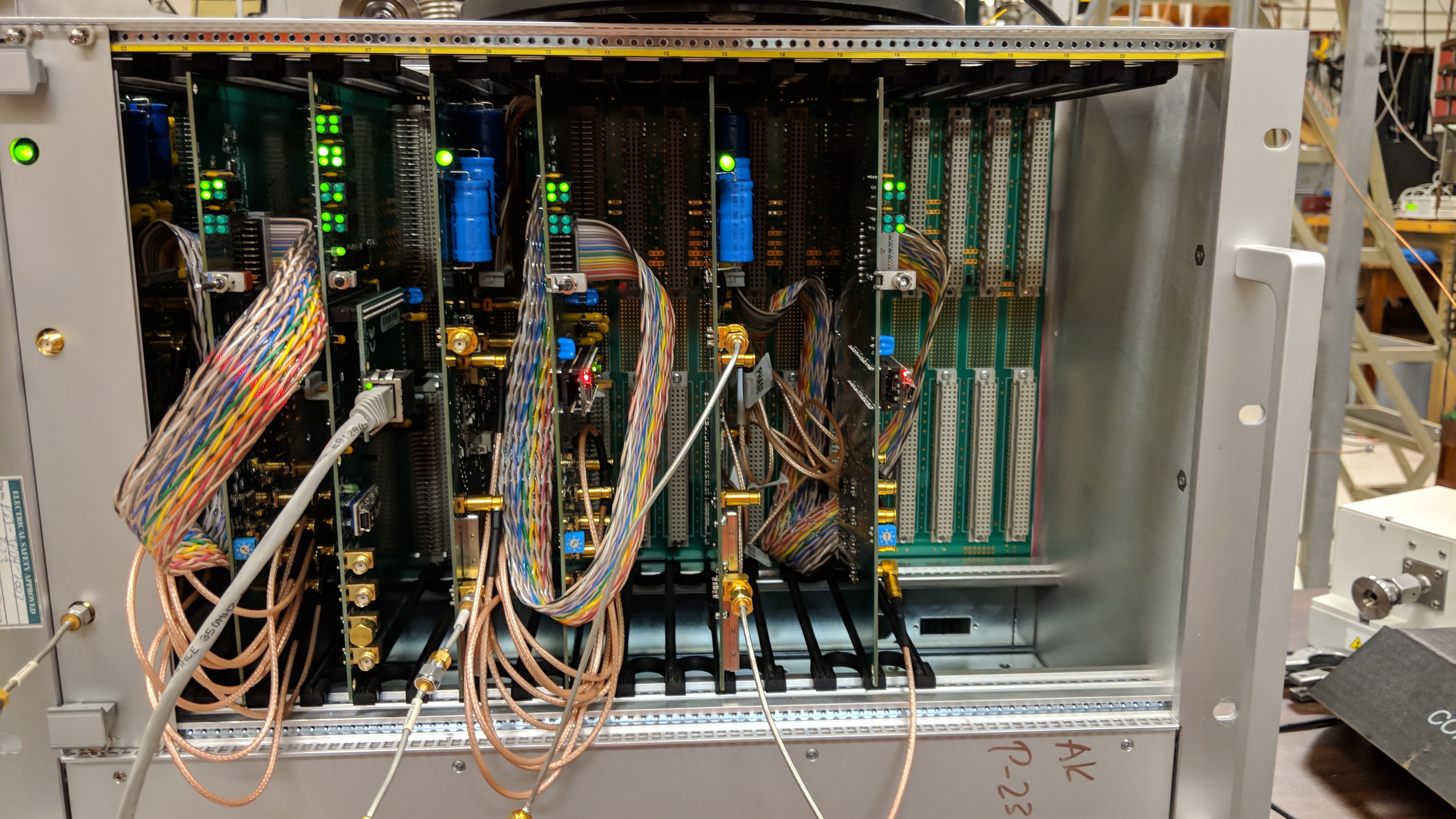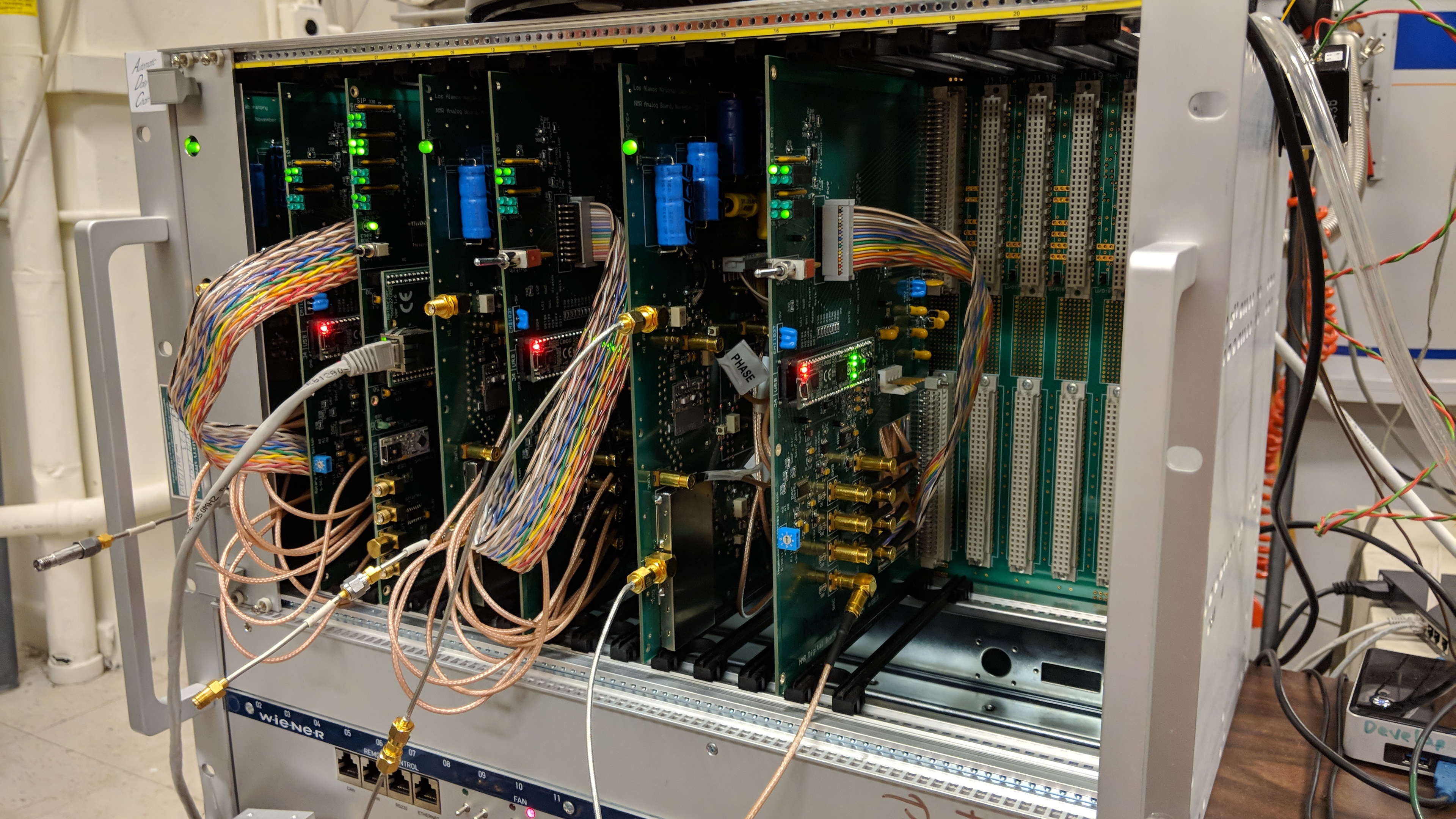More information on the NMR can be found here
The NMR system is used to measure the proton polarization in the sample, and operates by observing spin flips of the proton at its Larmor frequency. By embedding the inductor of an LCR circuit in the target material, we can detect energy lost or gained in the circuit as a function of the circuit's frequency. A loss of energy in the circuit near the proton's Larmor frequency would indicate the "absorption" of energy as its spin is flipped to be anti-aligned with the magnetic field. Likewise, a gain of energy in the circuit would come from a proton "giving up" energy as it becomes aligned. This gain or loss is visible as a dip or peak in the NMR signal versus frequency. The area under this dip or peak is a proportional measure of the proton polarization in the material.
To accurately measure the area of the NMR signal's dip or peak which is due to the polarization of the proton, we must carefully exclude any systematic changes in the NMR signal which are not due to polarization. To do this, we take a "baseline" measurement of the circuit's response "'without"' the polarization signal. This can be achieved by shifting the Larmor frequency of the proton out of range of our signal by changing the magnetic field. The baseline NMR signal is very sensitive to minute changes in the NMR circuit, and it is important to make frequent baseline measurements to ensure an accurate polarization measurement. A baseline should be taken at least every day after an anneal.
In addition to subtracting the baseline signal, a polynomial fit is performed to "wings" the NMR signal. This polynomial t subtraction should remove any residual baseline signal and leave only the signal due to the target polarization.
To calibrate our polarization, we must discover the proportionality factor,
or "calibration constant", which relates area under the NMR dip or peak to
the proper polarization. To do this, we take advantage of the known polarization when the sample is at thermal equilibrium. After forming the calibration
constant using this static, known polarization and the measured NMR area, we
can apply this constant when the target is being dynamically polarized with
microwaves.
A thermal equilibrium measurement (or TE) requires removing the beam and the microwaves, setting the pressure and temperature in the nose to be as constant as possible, and waiting for the NMR area to stabilize. The relaxation time of the polarization depends on the temperature, so the temperature is raised above 1K to decrease the time spent waiting. Even so, this will likely take as much as an hour per cup. The number and quality of the thermal equilibrium measurements directly affects the error on the target polarization measurement, so the TE should not be rushed! In experimental circumstances, the pressure to hurry and get back to taking beam can result in sloppy TEs which adversely affect the experiment's systematic error. Take time to be accurate; time has been budgeted to allow for these TE measurements.
The NMR (Nuclear Magnetic Resonance) system is needed to measure the polarization of the sample.


